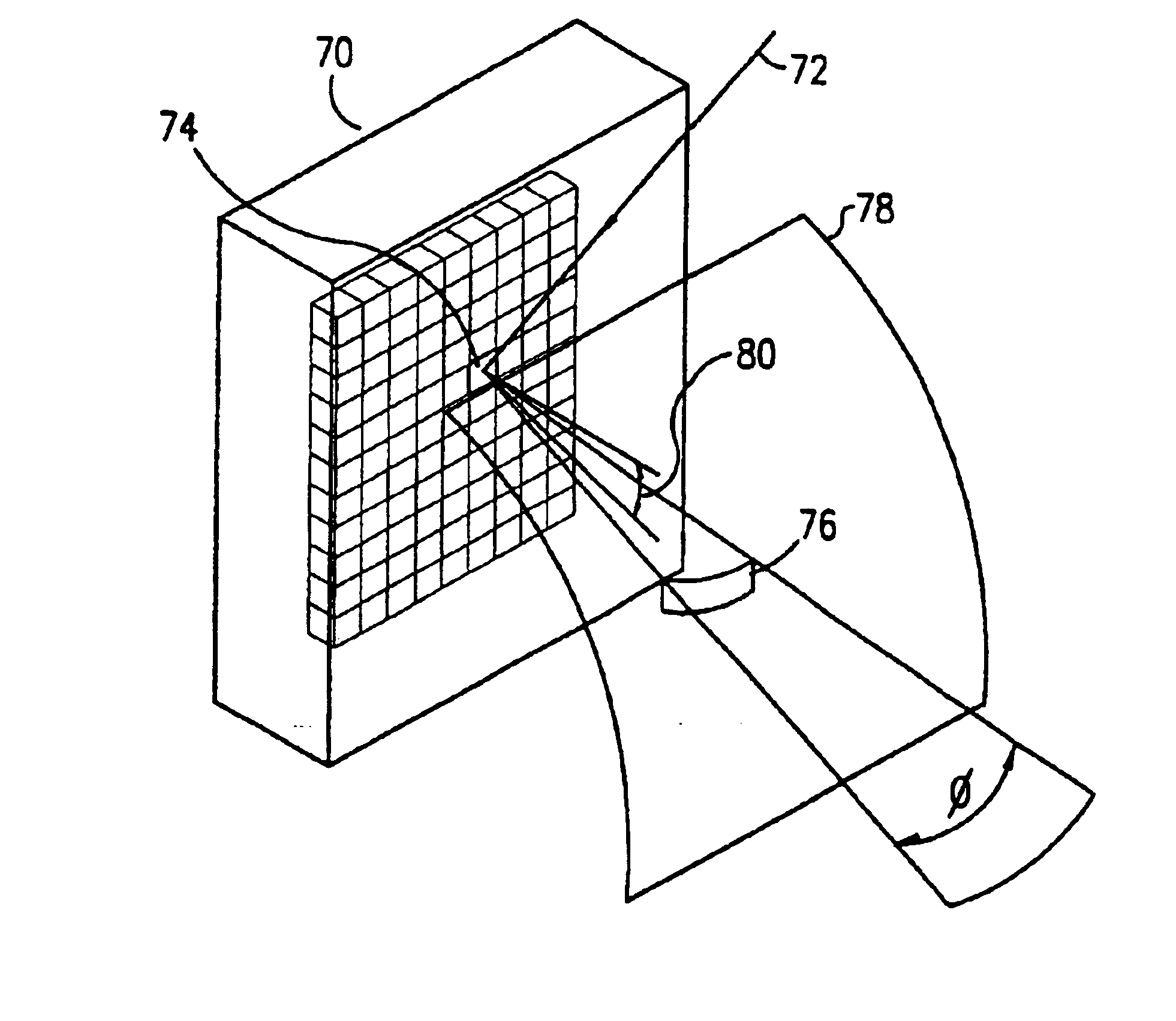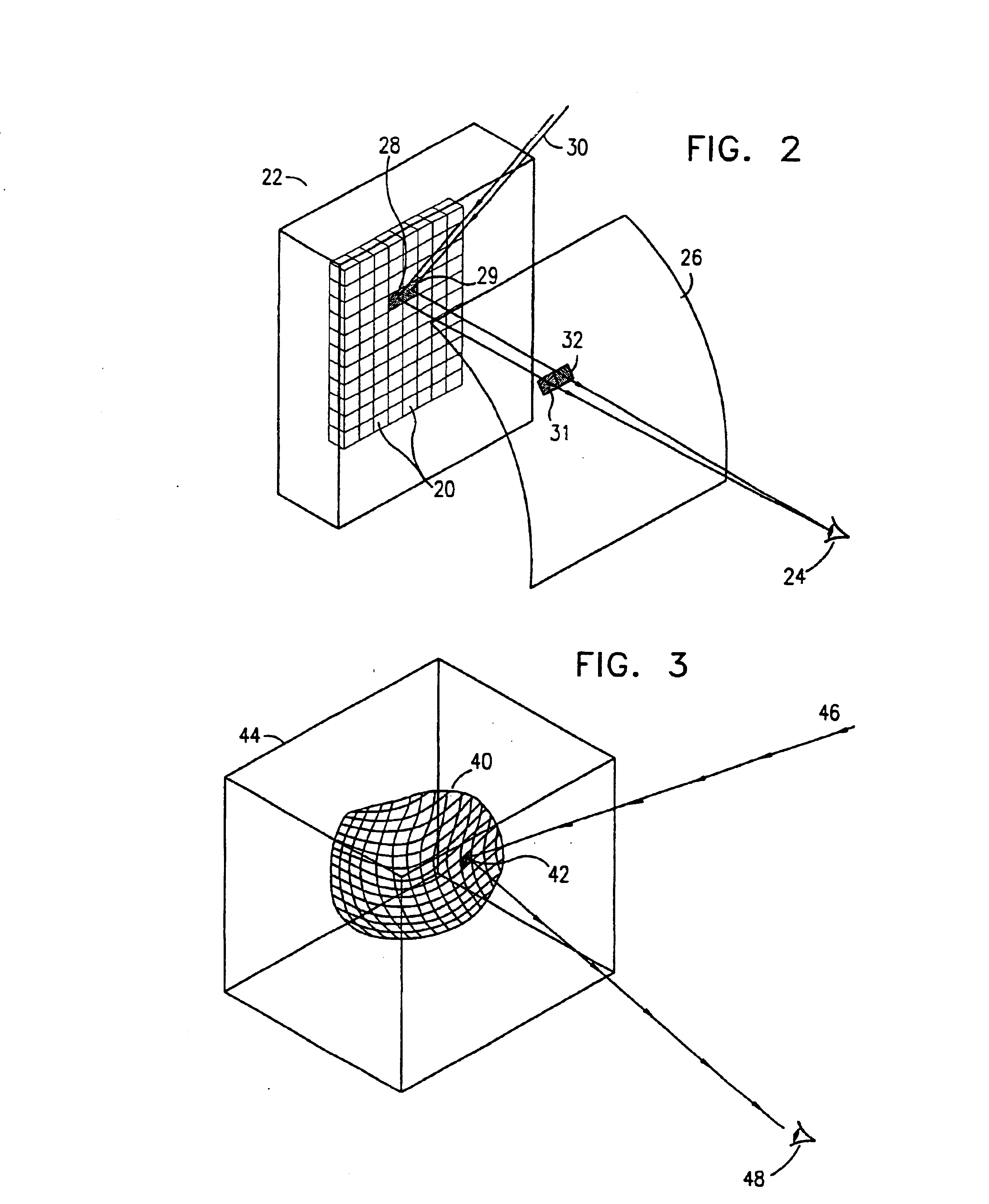Volume holograms in transparent materials
a technology of transparent materials and holograms, applied in the field of production of volume holograms in transparent materials, can solve the problems of limited use of holograms, requires the use of complex optical setups, and does not save field phase distribution
- Summary
- Abstract
- Description
- Claims
- Application Information
AI Technical Summary
Benefits of technology
Problems solved by technology
Method used
Image
Examples
Embodiment Construction
Reference is now made to FIG. 1, which illustrates schematically a computer controlled system for the production of computer generated volume holograms, constructed and operative according to a preferred embodiment of the present invention. A picosecond pulsed laser 1 emits a beam which is preferentially focused by means of a high quality optical system 2, into a transparent sample 3 in which the CGVH is to be produced. The laser pulse peak power, and the diffraction limit of the optical focusing system are such to ensure that the optical breakdown limit for the particular material of the sample is exceeded.
The sample is disposed on a CNC-controlled three-axis precision stage 4. The motions along the X-Y-Z axes is executed by means of CNC motors 5, 6, 7. A computer 8 is operative to control all of the functions of the system, synchronizing the firing of the laser pulses with the motion of the X-Y-Z axes, such that the required volume pattern of scattering points is formed in accorda...
PUM
 Login to View More
Login to View More Abstract
Description
Claims
Application Information
 Login to View More
Login to View More - R&D
- Intellectual Property
- Life Sciences
- Materials
- Tech Scout
- Unparalleled Data Quality
- Higher Quality Content
- 60% Fewer Hallucinations
Browse by: Latest US Patents, China's latest patents, Technical Efficacy Thesaurus, Application Domain, Technology Topic, Popular Technical Reports.
© 2025 PatSnap. All rights reserved.Legal|Privacy policy|Modern Slavery Act Transparency Statement|Sitemap|About US| Contact US: help@patsnap.com



